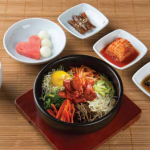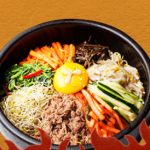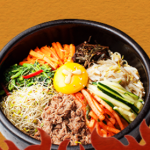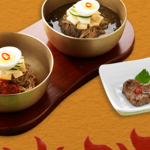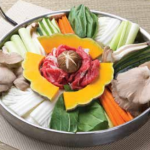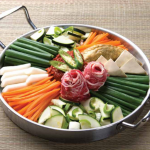Have you ever wondered about the unique and mouthwatering cuisine of Korea? Known for its rich flavors and colorful presentation, Korean food has gained immense popularity worldwide. From spicy stews to sizzling barbecues, there is an array of dishes that will tantalize your taste buds and leave you craving for more. So, let’s take a culinary journey and explore some of the most popular Korean dishes!
Introduction: An Invitation to Korean Cuisine
Are you ready to embark on a gastronomic adventure? Let’s dive into the vibrant world of Korean cuisine. With its emphasis on seasonality and balance, Korean dishes offer a remarkable blend of flavors, textures, and colors that reflect the country’s rich culinary heritage. Whether you are a fan of spicy food or prefer milder flavors, there is something for everyone.
1. Bibimbap: Harmony in a Bowl
Bibimbap, meaning “mixed rice,” is a beloved Korean dish that perfectly showcases the essence of Korean cuisine. Served in a hot stone bowl, it features a colorful assortment of sautéed vegetables, protein such as beef or tofu, and a fried egg, all beautifully arranged on a bed of steamed rice. The dish is completed with a gochujang sauce, a spicy fermented chili paste that adds a kick to the whole ensemble.
2. Kimchi: The Crown Jewel of Korean Side Dishes
No discussion of Korean cuisine is complete without mentioning kimchi. This fermented cabbage dish is an integral part of every Korean meal and comes in various styles, such as baechu kimchi (napa cabbage) and dongchimi (radish). Packed with beneficial probiotics and a fiery tang, kimchi not only adds a distinctive flavor to any dish but also contributes to gut health.
3. Samgyeopsal: Sizzling Pork Belly BBQ
If you are a meat lover, samgyeopsal is a dish you cannot miss. This popular Korean BBQ dish features thick slices of succulent pork belly, which are grilled at the table. Served with fresh lettuce leaves, garlic, and various condiments, samgyeopsal offers a delightful combination of flavors and textures. Wrap the grilled meat in a lettuce leaf, add some ssamjang (a savory soybean paste), and take a delectable bite.
4. Japchae: The Irresistible Glass Noodles
Japchae is a stir-fried noodle dish that showcases the versatile nature of Korean cuisine. Made from sweet potato starch noodles, japchae is stir-fried with an assortment of vegetables, meat or seafood, and soy sauce-based seasoning. The result is a medley of flavors and textures, with the translucent noodles coated in a sweet and savory glaze.
5. Bulgogi: The Flavor-packed Grilled Beef
Bulgogi, meaning “fire meat,” is a classic Korean dish that has gained worldwide recognition. Thinly sliced beef is marinated in a mixture of soy sauce, sugar, sesame oil, garlic, and other seasonings, allowing the flavors to penetrate the meat. The marinated beef is then grilled to perfection, resulting in tender and succulent slices that burst with savory goodness.
Conclusion: A Culinary Adventure Awaits
From its vibrant street food to its elegant royal cuisine, Korean food offers a diverse range of flavors and experiences. With its emphasis on fresh ingredients, balanced flavors, and communal dining, Korean cuisine not only satiates the appetite but also nourishes the soul. So why not embark on a culinary adventure and explore the delightful delicacies that Korea has to offer?
FAQ: Frequently Asked Questions
- What makes Korean cuisine unique?
-
Korean cuisine stands out for its emphasis on balanced flavors, fresh ingredients, and vibrant presentation. The extensive use of fermented ingredients, such as kimchi, contributes to the distinct taste and health benefits of Korean dishes.
-
Is Korean food always spicy?
-
While Korean cuisine is renowned for its spicy flavors, not all dishes are fiery hot. You can find milder options like bulgogi and japchae, which offer a more subtle taste profile.
-
Are vegetarian options available in Korean cuisine?
-
Absolutely! Korean cuisine offers a variety of vegetarian dishes, such as bibimbap with tofu, kimchi pancakes, and vegetable stir-fries. Vegetarian kimchi is also widely available.
-
Can you recommend some popular Korean street food?
-
Certainly! Some beloved Korean street snacks include tteokbokki (spicy rice cakes), kimbap (seaweed-wrapped rolls), and hoddeok (sweet pancakes filled with cinnamon and nuts).
-
Are there any unique dining customs in Korea?
- Korean dining culture often involves sharing dishes with others. It is customary to take a small portion of food from the communal plate or dish and eat it alongside rice or other side dishes. This communal style of dining encourages bonding and togetherness.
Now that you have a glimpse into the world of Korean cuisine, it’s time to experience the flavors firsthand. Treat your taste buds to the marvelous dishes this remarkable culinary tradition has to offer. Happy eating!
Selamat menikmati makanan Korea yang enak-enak! (Enjoy your delicious Korean food!)

